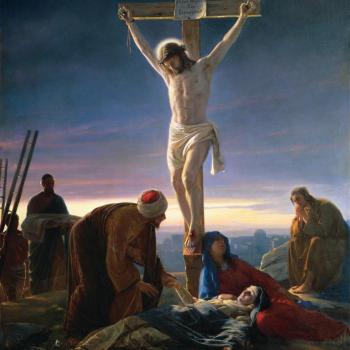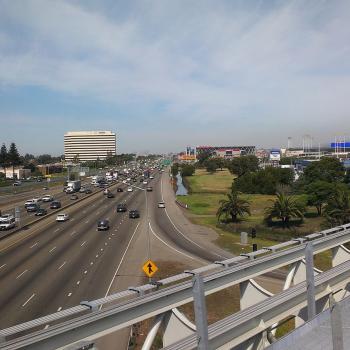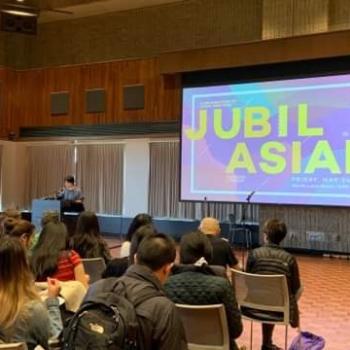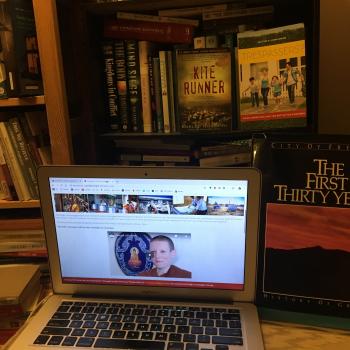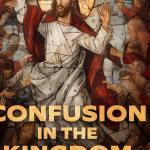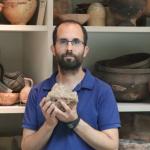There are moments in the career of a young academic when choices have to be made in terms of publication. Young scholars have to prioritize, keeping in mind the reality that the bulk of the work that we do is subject to peer review, after which what we write is disseminated through academic journals and books. However, as a journalist colleague of mine recently pointed out to me, this is not the only thing that we do. Aside from our academic publications, there is (of course) the joy of teaching students, our professional service to the university and to professional organizations, and (as he emphasized) service to a broader public by engaging and intervening in public conversations and debates. In a time when academic institutions are themselves embattled, that public service is more important than ever, as it is all the more urgent for academics to refute the misperception that academia is a waste of taxpayer money. But it’s a hard decision to make, as we are supposed to write primarily for our fellow academics. This is not snobby elitism. This is the academic guild believing that the peer-review process brings out the best in scholarship, which in turn can be usefully read by an educated public.
All that said, I am blogging, and I plan to write a whole series. I’m well aware that what is written here doesn’t ‘count’ as an academic publication: it is not peer-reviewed, the style is a bit more informal, and it is not being disseminated through a high-impact academic journal. This is not a publication. This is not a scholarly intervention. This is academic service.
I say all that because I have been and am currently involved in a bit of Asian American community activism that has produced an open letter to the evangelical church from Asian Americans that contests the ways that Asian Americans have sometimes been portrayed by American evangelicals. This series of posts is about why you as a member of the public should care.
My involvement has mostly revolved around publicly commenting about the open letter and the events that precipitated it, and as my journalist friend put it, this was service. The letter’s authors situate the piece in a decade of activism that has contested the use of orientalizing imagery in American evangelical publications and performances. By orientalization, I mean the portrayal of Asian Americans as a static ‘exotic other’ who will always remain a ‘perpetual foreigner’ in a self-constructed ‘West.’ Indeed, as the record in Asian American studies will show, such orientalization itself has had a long history in American popular culture, popular depictions of Asian religions, material culture, and missionary-academic collaboration. While I’m sure that there are historical examples of Asian Americans pushing back on American Protestants regarding these portrayals, the major pushback here from Asian American evangelicals about their place in the neo-evangelical theological movement began around 2004. Then, the issue was around Lifeway Publishers’ ‘Rickshaw Rally’ Vacation Bible School curriculum, a week-long children’s Christian education program that featured orientalizing songs, attire, and activities. Other issues were also named, such as the coalition of evangelicals that pressured Zondervan to pull Deadly Viper: A Kung Fu Survival Guide for Life and Leadership from publication in 2009.

Two events in recent evangelical history prompted Asian American evangelical authors Helen Lee and Kathy Khang to author and disseminate the open letter. On 23 September 2013, megachurch pastor Rick Warren (Saddleback Church) posted a photo of a Chinese Red Guard with the caption, ‘The attitude of Saddleback staff as they go to work every day.’ As Kathy Khang documents it, the picture itself was not as troubling as the reply when Warren was told by concerned Asian Americans that the picture was inappropriate. Warren replied that the photo was a ‘joke’ and that when Jesus used humour in his preaching, the ‘self-righteous’ failed to understand him while the ‘disciples were undoubtedly giggling.’ Concerned that Warren was not only brushing off the criticism but labeling his critics as those who might crucify Christlike humorists, Asian American evangelicals took to the blogosphere, most notably Hong Kong Baptist Theological School’s Professor Sam Tsang, who decried how the picture brought up painful memories of the Cultural Revolution in the People’s Republic of China (PRC) for Chinese Americans. Joined by Kathy Khang and A Christian Thing’s Chinglican at Table (among a host of other bloggers), the pushback pushed Warren to respond initially on Tsang’s blog. This was followed by a piece by Religion News Service’s Sarah Pulliam Bailey on the incident (incidentally, Bailey was the journalist at Christianity Today who wrote about Deadly Vipers), after which Warren issued a public conditional apology on his Facebook wall. Just two weeks later, though, Episcopal priest Rev. Christine Lee tweeted that the Exponential church planting conference, which was coincidentally held at Saddleback, had used an orientalizing skit, prompting a second article from Bailey and setting into motion the events that led to the open letter. While the church planting conference apologized prior to the publication of the open letter, the letter insisted on a public conversation about the place of Asian Americans in American evangelicalism.
My contribution to these activities has been my emphasis in my comments (especially to Bailey, upon which I elaborate in my blog posts here and here) that what starts public must stay public. As Bailey put it eloquently in her first piece, ‘the controversy over the photo raises questions about how public or private the evangelical conversation on ethnicity should be.’ I commented:
The offensive image was public, and Warren’s initial response to it (that Asian Americans should have more humor) was also public, so the Asian American response to Warren was appropriately public. However, the apology is only semi-public because Warren has not addressed the 4,021 followers who liked the post and explained to them why he took it down.
This quote was incidentally picked up by Xinhua New China News Agency for a PRC public, though my name was excised from those articles. When the Exponential incident occurred, I pressed my point about the need for a public conversation to Bailey:
It is worth observing that it has almost been 10 years since ‘Rickshaw Rally,’ and there are prominent American evangelical publishers, conferences, and pastors who still use Orientalizing imagery.
In other words, what came to be expressed in the open letter was that only a public conversation would have the openness to hold the private parties involved in this dialogue accountable to make change happen. That almost ten years had passed since Rickshaw Rally and orientalization is still perceived to be OK suggests that things have not yet changed adequately in American evangelicalism. As Asian Americans continue to be depicted as ‘orientals’ in American evangelical publications and performances, their place in American evangelicalism can be described as tenuous at best. But this is a strange way to put things, because a number of recent sociological studies have shown that there are many more Asian Americans now who would describe themselves as ‘evangelical’ due to the presence of university campus groups, immigrant churches, and new second-generation congregations that appeal to pan-Asian American senses of identity. The mismatch there between the sociological reality and the practice of prominent American evangelicals can be described as troubling at best.
The question, though, is: who cares?
Indeed, the major criticism that has come my way is that what we’re doing doesn’t matter much in the grand scheme of things. Though I’m very public about my Christian practice, my position in secular academia has spared me largely from the critiques that I’m promoting ‘gossip,’ destroying a ‘godly man’s reputation,’ failing to use a personal approach in Christian confrontation (as per the Gospel according to St. Matthew, 18.15-17), and promoting ‘division in the church.’ Unfortunately, my colleagues have had to bear the brunt of these criticisms because of their situatedness in church and parachurch ministries. For my part, I’ve gotten constructive academic criticism about my involvement. One Asian Americanist colleague remarked that while he signed and supported the letter, he hoped that we could work on ‘larger issues’ beyond the current obsession with media and culture, such as ‘human trafficking, refugee resettlement, support for the undocumented, and lack of health insurance.’ Another senior scholar commented that our activism seemed insignificant in comparison to other news events, such as global religious persecution, terrorism in Nairobi, political and religious instability in Egypt, and the recent government shutdown in the United States.
In other words, what could possibly be so important about activism around the Asian American evangelical open letter so as to devote weeks to its service?
This series is meant to answer that question.
Let me repeat what I’ve said on the record: what is important is that what started public stays public. Put another way, this whole Asian American ‘open letter’ incident is about much more than Asian American evangelicals contesting the slights of the evangelical world against their own egos. It has much more to do with helping us think about what is public and what is private, and it does that by making us think hard about the public-private division in American religion. The Asian American evangelical open letter matters because it is one episode in a larger story that ties American religion to politics in North America.
This series of posts will attempt to unpack what that means.
My central point in this series is that the Asian American open letter is just one example of a multifaceted contemporary political moment in which the private consensus in American religion is unraveling. Broadly speaking, what I mean is that since the 1970s, a consensus has emerged, particularly among conservative forms of Protestantism (what I’m going to call evangelicalism as a sort of shorthand, though the term admittedly encapsulates a diversity of practitioners), that religion is about the fortification of a private sphere. Of course, some may challenge this claim by saying that this was precisely the time that the Christian Right was mobilizing evangelicals into politics. My response is that while the emergence of the Christian Right certainly appeared to be a public shift in evangelicalism, it wasn’t: that ‘public’ shift had happened already in the 1940s when biblical inerrantists like Harold Ockenga, Carl Henry, and Billy Graham called on their fellow believers to engage and rebuild ‘Western’ culture from nihilism, and it arguably culminated in the 1974 Lausanne Conference’s call for evangelicals to engage in social action and cultural sensitivity as they moved forward in their global evangelical mission. Instead, as the ‘culture wars’ began, the public engagements of those positioned on the Christian right tended to be about protecting the private spheres of family and church through sexual morality and religious freedom. This was something subtly new. If evangelicalism used to be about public engagement with the big issues of nuclear armament, environmental devastation, and poverty reduction (as Carl Henry argued that it should be in The Uneasy Conscience of Modern Fundamentalism), the emergence of the Christian Right represents a rather significant shift into a focus on the private sphere.
Incidentally, this ‘private consensus’ also saw the emergence of the ‘megachurch,’ large congregational gatherings that were thought to be effective in evangelism and engaging a secular culture. While some have decried megachurches as hubs for the religious right’s culture war agenda, I would be much more careful about making this claim. My sense is that the megachurches represented a more conciliatory strategy, appealing to private ‘felt needs’ in which divine intervention would be necessary. Instead of always explicitly getting involved in the politics of sexual morality and religious freedom (though some definitely were), these congregations developed what Donald Miller calls a ‘new paradigm evangelicalism’ that was therapeutic, individualistic, and anti-establishmentarian. You have psychological needs, this new paradigm might say, and the church is here to meet them. A ‘new paradigm’ in the sociology of religion that arose around this time argued that it was time for all of American religion to be read back through American religious history and reconceptualized as a ‘new religious economics,’ with people making voluntary ‘rational choices’ about where to attend church and what religions of which to be a part. What was common between this and the conservative ‘culture wars,’ though, was that the focus was on the private sphere. People were religious consumers of private congregations in a theological market. The church (and by extension, through the new paradigm, other religious ‘congregations’ as well, dubious as that might sound to any non-Christian religious practitioner) became a self-contained private sphere that served people as private people with private needs.
In turn, this new ‘private consensus’ in American religion dovetailed with a new ‘private consensus’ in state governance. Since the emergence of President Ronald Reagan in America, Prime Minister Margaret Thatcher in the United Kingdom, and Prime Minister Brian Mulroney in Canada (among other state leaders who thought similarly), a consensus began to be developed around what was called neoliberal ideology. The idea was that government was not the solution to economic problems; as Reagan famously said, it was ‘the problem.’ Seeking to deregulate the economy so that the free market could organically create and distribute wealth in society through the hard work of individuals in private business (the ‘free market’ was what was ‘liberal’ about the whole thing), the state also developed a ‘private consensus’ at this time that resonated with the one in the church. You are not consumed by being a public, this state philosophy might say. Ordinary people have individual lives spent working hard and playing hard in private spheres and don’t really have that much time to be part of a ‘public.’ Indeed, in some ways, those who were developing the private consensus in the church were instrumental to the one in the state; one sees this with both Catholics and Protestants like Robert George, Marvin Olasky, Chuck Colson, and the late Richard John Neuhaus who both emerged in the early 1990s to make strong cases against government welfare and for the private spheres of family, church, and marketplace work that would employ, educate, and discipline people.
What I am saying is that in the last few weeks, we have witnessed a series of major episodes in the unraveling of this multifaceted ‘private consensus.’ This unraveling, I’m going to argue, has been precipitated by the advancement of alternative ways of conceptualizing the ‘public.’ This was certainly true in the ‘open letter’ case: Asian American evangelicals are forcing these private evangelical ministries to open up to a ‘public’ outside of themselves to have an open dialogue about orientalization. What I’m saying is that what Asian American evangelicals did is just one example in a larger story. From the explosion of activity around John MacArthur’s Strange Fire conference to the explosiveness of Mark Driscoll’s messages about masculinity to Steven Furtick’s multimillion dollar home to the less recent case of Sovereign Grace Ministries’s lawsuit over child abuse, the notion that what is said within certain evangelical pockets is ‘private’ and thus irrelevant to other Christians or to a general public is becoming untenable. So too, the furor over the recent government shutdown in America and the Senate scandal in Canada indicates that something about the ‘private consensus’ in government is starting to come apart as well.
In the next few posts, I’m going to muse on these developments. As this is a blog, some of my thoughts will be more tenative and experimental. But I hope that you will think through them with me and help me to develop my thoughts. My next post (and if it’s too long, next few posts) will be about how the private consensus in American religion seems to be unraveling. When I’m done talking about that, I hope to talk about American religion in relation to the unraveling of the private consensus in government. As I’ve said, this unraveling isn’t just giving way to a nihilistic nothingness. It seems to be precipitated by new and challenging ideas of what the ‘public’ is and what democratic discourse should look like. Of course, then, I’m not saying that the ‘private consensus’ has completely unraveled. I’m saying that we are seeing definitive episodes of its coming apart due to the advent of new ‘public’ practices in American religion.
I want to explore these developments publicly, showing you that my own thoughts are also still in development. This perhaps is the most compelling reason for this to stay as academic service. I’m still trying to think through this. But I want to think through it publicly because this is a very interesting public moment. So stay tuned.
POSTSCRIPT: I’ve actually given hints about the ‘private consensus’ on this blog before. Here are some of the posts:
- On misunderstanding Pope Francis
- On my annoyance at ‘competitive religion‘
- On different kinds of ‘conservatisms‘
- On the Sovereign Grace Ministries lawsuit
- On evangelicals and secular law
- On what Alan Chambers’s Exodus apology does to the culture wars
POSTSCRIPT #2: I understand full well that the events that precipitated the Asian American evangelical open letter had a Hong Kong dimension as well. However, this series of posts is about the unraveling of the private consensus in American religion. While Hong Kong (and for that matter, most Asia-Pacific political economies) also developed a ‘private consensus,’ my sense is that the conversation here is categorically and geographically separate from the North American one, transnational connections though there may be. However, because my research does have a Hong Kong focus as well, I can also write about these Asia-Pacific contexts. If the readers start developing a consensus to head in this direction, I’d be happy to extend my case to Asia-Pacific religion. But first, American religion…



